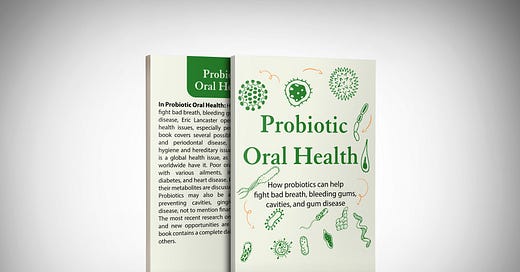Sorry I missed last week. I took a quick trip to visit relatives that I have not seen before the pandemic. The article below is a reprint of an article I wrote for Skunk Magazine a few years ago. It has been edited from its original version.
When probiotic farmers first start using probiotics, chances are the first group of microbes they learn about are Lactic Acid Bacteria. A good reason for this is that Lactic Acid Bacteria (LABs) are used as food processing ingredients and sanitizers in food processing facilities. Some of the most common LABs include the Lactobacillus, Bacillus, and Bifido genera. Some Lactobacillus species include casei, delbruekki, plantarum, fermentum, and subtilus. All of these species are well-known in the food industry and are generally recognized as safe (GRAS) ingredients. They are also the most commonly used probiotic microbes. They are soil-borne facultative anaerobes, meaning they need some oxygen, but not a lot. They are often found in the first 6 inches of soil and are known as fermenting microbes, as they are used to ferment foods. Fermentation is a process where microbes are added to some type of sugar and placed in a container where the microbes eat the sugars, digesting them and excreting metabolites into the surrounding area (liquid or solid). Many companies have found targeted uses for these metabolites and remove the metabolites after fermentation, package them, and sell them at a high cost. The microbes are then freeze-dried and sold as a probiotic.
One thing that must be understood about microbes is how they are produced and maintained. The majority of products on the market are powdered or freeze-dried. The freeze-drying process causes damage to the microbes, resulting in a 90 to 95% die-off. Even though colony counts are high, only 5 to 10% of those microbes are alive. This is especially important once one understands the roles of metabolites, how they are produced, and which ones are produced by which microbes. Metabolites include amino acids, bacteriocins, co-enzymes, enzymes, organic acids, and vitamins. These metabolites contain the natural pesticides produced by the microbes and can help suppress molds, other microbes, and sometimes even insect pests.
Lactic Acid Bacteria produce lactic acid from sugars and other carbohydrates that are used as food sources during normal metabolism. For thousands of years, food and drinks such as yogurt and pickles have been made with LABs. Lactic acid is a strong sterilizing compound that suppresses harmful microorganisms and enhances the decomposition of organic matter. LABs promote the fermentation and decomposition of material such as lignin and cellulose, thereby removing undesirable effects of non-decomposed organic matter, which can putrefy and release gasses such as methane and ammonia that are toxic to plants. In soil, lactic acid has the ability to suppress disease-inducing microorganisms, including the mold fusarium, which occurs in continuous cropping programs. Under normal circumstances, species such as Fusarium weakens crop plants, thereby exposing the plants to diseases and increased pest populations such as pathogenic nematodes. The use of LABs reduces pathogenic nematode populations and controls propagation and the spread of fusarium, thereby creating a better environment for crop growth.
In soils, these probiotic microbes co-exist with other beneficial fungi, such as mycorrhizae, that are known to attack several pathogenic fungi, such as fusarium, and also become food themselves to organisms such as worms. Not only are the organic acids effective as pathogen controls, but so are the bacteriocins that are produced. Bacteriocins are specially designed enzymes that attack pathogenic organisms, helping the LABs change the environment to establish themselves. These are just a few reasons why LABs are considered the front line of defense for Probiotic Farmers.
Please be sure to check out my book, Probiotic Oral Health, on Amazon.com, where you can learn how lactobacillus microbes are used to promote oral health.





Next break will be to visit your sister. We can work on researching gut health, probiotics, and their connections to mental health 😜 would love to collaborate sometime!